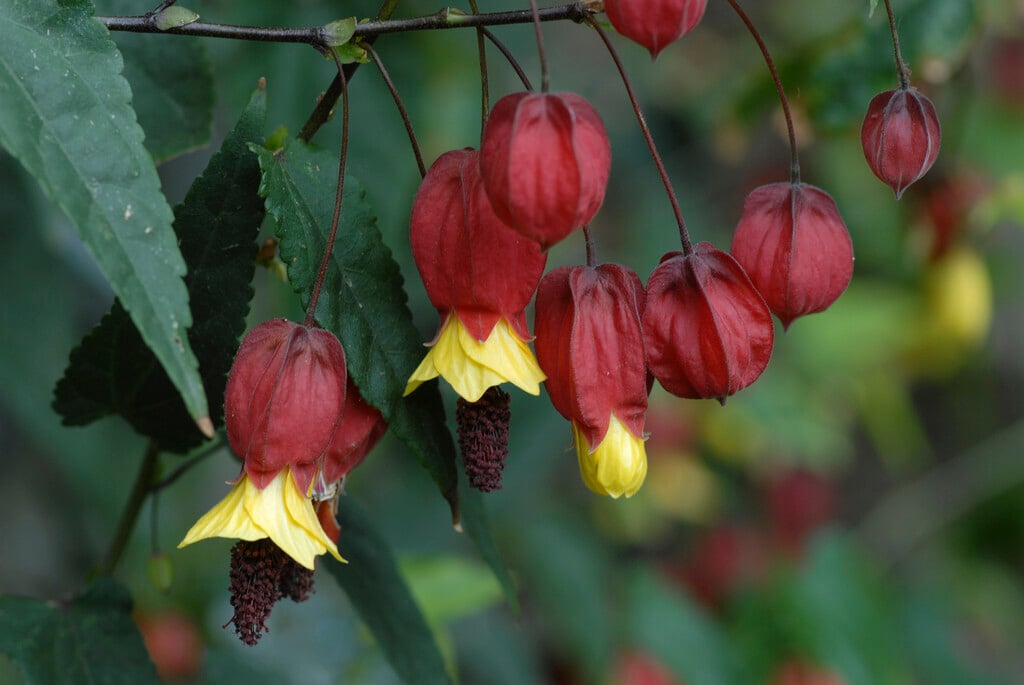Abutilon megapotamicum
trailing abutilon
A deciduous or partially evergreen, medium-sized shrub to 2m, with tapering, narrowly ovate leaves, and pendulous, bell-shaped flowers with yellow petals and large crimson calyx, in summer and autumn
Size
Ultimate height
1.5–2.5 metresTime to ultimate height
10–20 yearsUltimate spread
1.5–2.5 metresGrowing conditions
Moisture
Moist but well–drained, Well–drainedpH
Acid, NeutralColour & scent
| Stem | Flower | Foliage | Fruit | |
| Spring | Green | |||
|---|---|---|---|---|
| Summer | Red Yellow | Green | ||
| Autumn | Red Yellow | Green | ||
| Winter | Green |
Position
- Full sun
Aspect
South–facing or East–facing
Exposure
Sheltered Hardiness
H3Botanical details
- Family
- Malvaceae
- Native to GB / Ireland
- No
- Foliage
- Semi evergreen
- Habit
- Bushy
- Genus
Abutilon can be evergreen or deciduous shrubs, trees, perennials or annuals, with simple or palmately lobed leaves and bell-shaped or bowl-shaped flowers often with conspicuous stamens
- Name status
Correct
- Plant range
- Brazil
How to grow
Cultivation
Grow as an indoor or conservatory plant or outside as summer bedding in a sheltered position
Propagation
Propagate by seed in spring at 15°C to 18°C, or by softwood cuttings
Suggested planting locations and garden types
- Patio and container plants
- Flower borders and beds
Pruning
Pests
May be susceptible to glasshouse whitefly, glasshouse red spider mite, mealybugs and scale insects
Diseases
May be susceptible to honey fungus (rarely) or a virus
Get involved
The Royal Horticultural Society is the UK’s leading gardening charity. We aim to enrich everyone’s life through plants, and make the UK a greener and more beautiful place.
